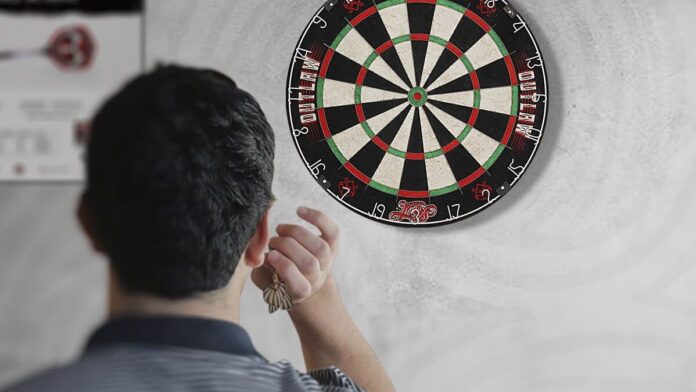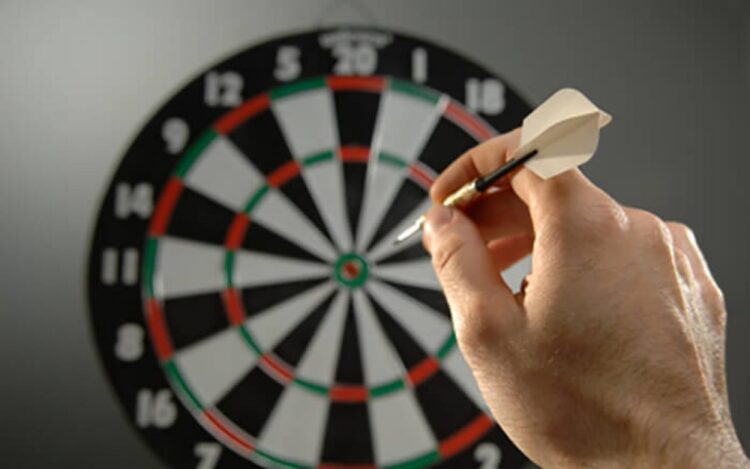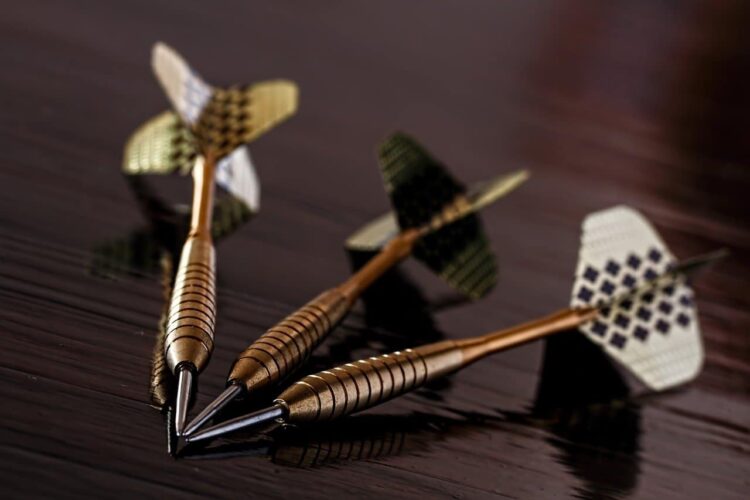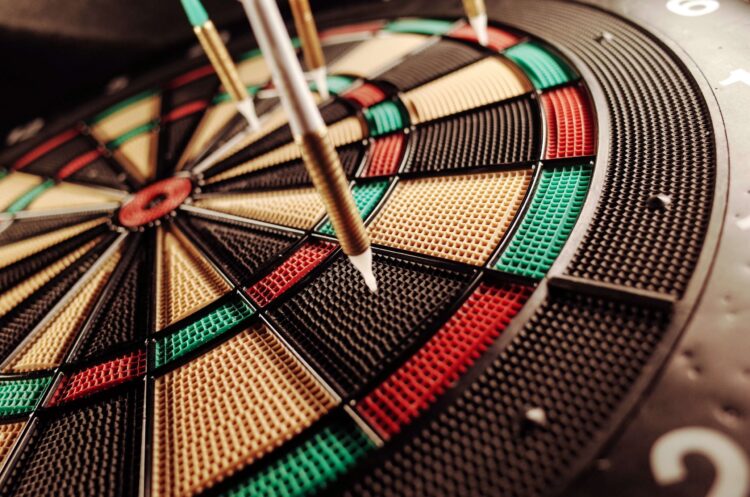
Hitting the bull’s eye may be just beginner’s luck. Or, it could be that your arm is just feeling pretty good today. If you want to get better at your dart game, you have to be consistent with your aim. Getting a consistent bull’s eye requires practice, patience, and know-how.
Several techniques will help you throw darts consistently. It would mainly revolve around the proper methods of holding and throwing the darts. To be the best at your game, you need to be well versed in these mechanics.
Tips on How to Throw Darts Consistently

1. Great grip
Hitting a bullseye consistently starts with the proper grip. You have to know how to hold the dart properly. Your grip should have the right amount of tension. It shouldn’t be too soft or too hard. There has to be a specific amount of control every time you hold each dart.
Ultimately, the primary goal of your grip is to keep the dart pointing upwards as you release.
Pencil grip
The best grip that you can use is called the pencil grip. Hold the dart as if you’re holding a pencil. The dart should be placed between your thumb and your first two fingers. Your thumb will be the one in control while the other two fingers are there for support. The two fingers will also guide the dart as you throw it.
The grip should neither be too loose nor too tight. You have to have the right amount of force or control. If the dart barrel is bigger, you have an option to use three fingers for support instead of just two. However, it’s a matter of personal preference. You have to use whichever grip you’re more comfortable.
Remember that the key here is using the grip that will allow you to gain just the right amount of control on the dart barrels.
Some don’ts
First, never use four fingers. It will strain the muscles on your fingers, making release difficult.
Second, don’t hold too tight on the dart. Doing is a big mistake most newbies often make. A too-tight grip will make it difficult for your fingers to release the dart because there is already muscle tension there.

2. The right stance
What is the right stance that can help you throw darts consistently? Well, that depends on you. Find the sweet spot where you’ll feel most comfortable. But at the same time, you should be able to maintain consistency and control.
Most players start by standing with their feet hip-width apart. Then, slowly face the dartboard sideways, with your dominant foot in front. The back foot will be your supporting leg.
If you’re left-handed, your leg foot should be in front. Conversely, if you’re right-handed, your right foot should be in front. It will help you gain more control.
Novices often make the mistake of standing directly in front of the dartboard. Standing head-on with the dartboard won’t help you get a good aim. Instead, face sideways so that you’ll execute a better throw.
Afterward, start to draw an imaginary line from your foot to the dartboard. The toes on your front foot should be directly facing the dartboard. The imaginary line will guide and will help you get a good aim at the board.
Always keep both of your feet flat on the floor. Raising one of either foot can cause imbalance.
3. Setting up for the perfect throw
After positioning your body for the proper stance, the next thing is to prepare yourself to throw the dart.
You will have to position your arm correctly and get a good sight of your target. First off, keep your shoulders and hips straight. Your shoulders should be stacked in front of your hip. Take note that your upper arms should be raised so that the hand holding the dart is parallel to your sightline.
Some players get in the habit of slightly tilting forward as they prepare for releasing the dart. You can also do this one so long as your foot doesn’t go beyond the throw line. Otherwise, you might have to do it all over again.
Be careful not to lean too forward as this can make your stance unstable and affect the way you throw your dart.

4. Releasing the dart
An important tip here is to keep your upper arms and shoulders stationary. If not, there should be minimal movement. As you move and release the dart, the only parts of your body that should move should be your forearms and wrist.
5. Use just the right amount of force
You don’t need to go all Herculean as you release the dart. The dartboard is usually just 5 feet away from you, or even nearer. Hence, there’s no need to use excessive power or force.
As you release the dart, the force should also be coming from your wrist then forearms. Its shield is a fluid, natural movement.
6. Don’t forget to follow through
When you’ve got everything correctly, don’t forget to follow through. This mechanism is often overlooked, especially by beginners. It’s just as important as the grip, stance, and the release.
You have to extend your arms after each release of the darts. It should be a fluid, natural movement.

Final words
Remember, darts is a game of technique, not force. Pub-goers have been practicing this technique going all the way back to the 1500s according to The Toy Report. It entails regular practice to get the perfect grip and stance that would work for you. Trying on different types of grip and stance is encouraged so that you can find the sweet spot that’ll help you throw darts consistently.
Always remember that it has to be something that you’re comfortable doing. Hence, it’s best to find your style following the recommended mechanisms above.
Also, apart from regular dart sessions, you can watch how professional dart players hit the bull’s eye. You can observe and learn from their techniques as well. And if you haven’t had a good aim yet, do not fret. Remember. It’s a game you should also learn to have fun.











